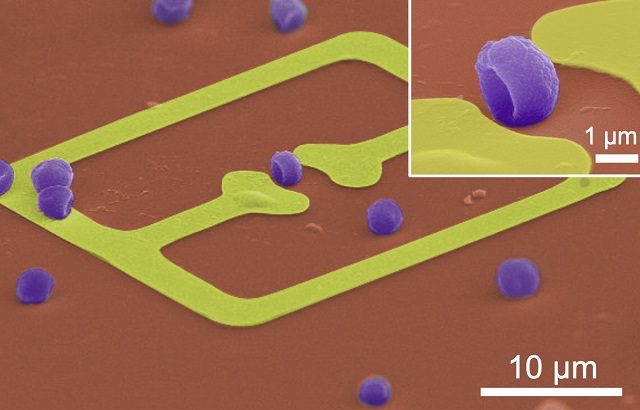Breakthrough in microplastic detection: Dr SaeJune Park pioneering sensors with future telecommunication technology

Dr SaeJune Park, a Lecturer in Terahertz (THz) Electronics and the Head of the THz Laboratory in the Centre for Electronics (Antennas & Electromagnetics Research Group) at School of Electronic Engineering and Computer Science at Queen Mary University of London, is leading a groundbreaking project to develop novel sensors for microplastic detection in aquatic environments in collaboration with the Water Research Centre, the University of Leeds, and the National Physical Laboratory. These innovative sensors utilise future telecommunication technology i.e. THz metasurfaces, offering a faster, more sensitive, and potentially revolutionary approach to real-time monitoring microplastic pollution.
Microscopic plastic fragments, ranging from 1 micron to 5 millimetres, have become a pervasive environmental concern. These microplastics contaminate our rivers, lakes, and oceans, potentially impacting ecosystems, and even human health. Recent studies have even found microplastics in the placentas of unborn babies, highlighting the alarming extent of this contamination.
Existing methods for monitoring microplastics, such as Fourier-transform infrared spectroscopy and Raman spectroscopy, are labour-intensive and time-consuming. They require pre-treatment steps like density separation, which can take hours or even days. Additionally, these techniques have limitations in detecting smaller particles in real time.
“The exciting bit here is using THz metasurfaces – the patterned artificial structures that let us customise the properties of microplastic sensors to our will. By tweaking the geometry, we can design a metasurface that resonates like a tuning fork at a particular THz frequency. Now, when something changes in the environment, like microplastics showing up, it disrupts that resonance. By measuring these tiny shifts in frequency, we can potentially not only detect microplastics, but potentially even figure out their size and how many there are – all with high sensitivity,” explains Dr Park.

"There are a few things that make this THz sensor so promising," continues Dr Park. "First, it's completely non-invasive and the next version of this sensor would not require any labels or chemicals on the samples, which is great for the environment and makes it user-friendly. Second, it has the potential for real-time monitoring, so we can potentially detect microplastics right there on the spot in environmental settings. And lastly, because the sensor is compact and analyses things in real-time, it could even be integrated into factory lines, like for monitoring bottled water quality."
Dr Park's project represents a significant advancement in microplastic detection technology. This research, supported by a £450k grant from the Engineering and Physical Sciences Research Council (EPSRC), holds promise for a cleaner and healthier future for our waterways and a more sustainable industrial landscape.
Related items

8 May 2025

19 February 2025
